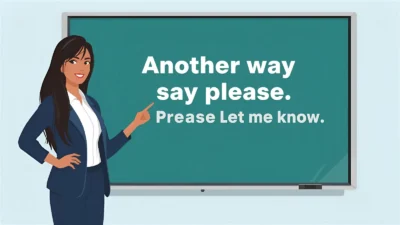The word “highlights” is often used to emphasize important points, key achievements, or notable aspects of something — such as a report, event, or presentation. While effective, repeating it too often can make your writing sound repetitive or predictable.
Using alternatives to “highlights” allows you to adjust your tone, fit different contexts, and sound more professional, creative, or precise depending on your audience.
Here are 25+ refined alternatives to “highlights,” each with a meaning, example, best use, and tone to help you communicate with clarity and variety.
1. Emphasizes
Meaning: Draws special attention to something important.
Example: The report emphasizes the need for better communication between departments.
Best Use: Academic or professional writing.
Tone: Formal, clear, analytical.
2. Underscores
Meaning: Reinforces or stresses the significance of a point.
Example: This data underscores the importance of consistent training.
Best Use: Business or analytical reports.
Tone: Professional, assertive, confident.
3. Showcases
Meaning: Presents something in an attractive or impressive way.
Example: The presentation showcases our latest product innovations.
Best Use: Marketing, creative writing, presentations.
Tone: Positive, polished, promotional.
4. Illustrates
Meaning: Uses examples or visuals to make a point clearer.
Example: The case study illustrates how teamwork drives success.
Best Use: Educational or explanatory writing.
Tone: Informative, neutral.
5. Demonstrates
Meaning: Clearly shows evidence or proof of something.
Example: The experiment demonstrates the effectiveness of the new formula.
Best Use: Academic, technical, or scientific contexts.
Tone: Factual, professional, precise.
6. Points Out
Meaning: Brings attention to a specific fact or issue.
Example: The author points out key trends in consumer behavior.
Best Use: Analytical or report writing.
Tone: Objective, explanatory.
7. Brings to Light
Meaning: Reveals or exposes something previously unnoticed.
Example: The audit brings to light several areas needing improvement.
Best Use: Reports, journalism, evaluations.
Tone: Investigative, formal, clear.
8. Reflects
Meaning: Shows or indicates an outcome or characteristic.
Example: The company’s growth reflects its strong leadership.
Best Use: Business communication, summaries.
Tone: Polished, analytical.
9. Reveals
Meaning: Makes something known that was hidden or unclear.
Example: The findings reveal a shift in customer preferences.
Best Use: Research, presentations, formal analysis.
Tone: Professional, direct.
10. Displays
Meaning: Shows something visually or clearly for observation.
Example: The chart displays a steady increase in sales.
Best Use: Reports, visuals, or data presentations.
Tone: Neutral, technical.
11. Outlines
Meaning: Provides a summary or overview of key points.
Example: The document outlines the project’s major milestones.
Best Use: Reports, proposals, business communication.
Tone: Structured, concise, formal.
12. Depicts
Meaning: Describes or represents something vividly or clearly.
Example: The film depicts the challenges of rural life.
Best Use: Creative or descriptive writing.
Tone: Expressive, detailed.
13. Pinpoints
Meaning: Identifies something very specific or precise.
Example: The study pinpoints the causes of the performance gap.
Best Use: Analytical or problem-solving contexts.
Tone: Accurate, professional.
14. Spotlights
Meaning: Draws focused attention to something notable or exceptional.
Example: The article spotlights innovative startups in the tech industry.
Best Use: Journalism, marketing, storytelling.
Tone: Dynamic, engaging, positive.
15. Stresses
Meaning: Places strong emphasis on an important idea.
Example: The report stresses the value of employee engagement.
Best Use: Academic, business, or persuasive writing.
Tone: Formal, direct, assertive.
16. Features
Meaning: Presents something as a main or special part.
Example: The magazine features interviews with top designers.
Best Use: Media, marketing, and product descriptions.
Tone: Promotional, creative.
17. Summarizes
Meaning: Provides the key points or essence of something.
Example: The closing section summarizes the project’s achievements.
Best Use: Reports, conclusions, briefings.
Tone: Formal, concise, neutral.
18. Exhibits
Meaning: Publicly shows or displays a quality or result.
Example: The company exhibits strong commitment to sustainability.
Best Use: Professional or academic contexts.
Tone: Sophisticated, formal.
19. Identifies
Meaning: Recognizes or names key elements or issues.
Example: The survey identifies major areas for customer improvement.
Best Use: Reports, data analysis, evaluations.
Tone: Objective, technical, analytical.
20. Marks
Meaning: Indicates an important event, change, or achievement.
Example: This milestone marks a turning point for the organization.
Best Use: Business or historical writing.
Tone: Reflective, formal.
21. Portrays
Meaning: Describes or represents something in a certain way.
Example: The book portrays the struggles of young entrepreneurs.
Best Use: Creative, analytical, or literary writing.
Tone: Descriptive, expressive.
22. Indicates
Meaning: Points to or signals something as evidence.
Example: The data indicates steady improvement in employee performance.
Best Use: Analytical, academic, or scientific writing.
Tone: Objective, factual.
23. Calls Attention To
Meaning: Directs focus toward an important element.
Example: The speaker called attention to the need for innovation.
Best Use: Presentations, speeches, and reports.
Tone: Persuasive, professional.
24. Illuminates
Meaning: Explains or clarifies something complex or hidden.
Example: The study illuminates the challenges faced by small businesses.
Best Use: Academic or narrative writing.
Tone: Thoughtful, formal, intellectual.
25. Captures
Meaning: Successfully represents or conveys the essence of something.
Example: The photo captures the spirit of the event perfectly.
Best Use: Creative or descriptive writing.
Tone: Expressive, artistic, engaging.
26. Exemplifies (Bonus)
Meaning: Serves as a perfect example or model of something.
Example: Her leadership exemplifies the values our company stands for.
Best Use: Professional or academic writing.
Tone: Formal, respectful, strong.
Conclusion
While “highlights” is a useful and versatile word, varying your vocabulary adds depth and professionalism to your communication.
- For formal writing, use “underscores,” “illustrates,” or “demonstrates.”
- For creative or promotional contexts, try “showcases,” “features,” or “spotlights.”
- For analytical reports, choose “outlines,” “pinpoints,” or “indicates.”
Choosing the right synonym allows you to express ideas more clearly, precisely, and with the tone best suited to your audience.



